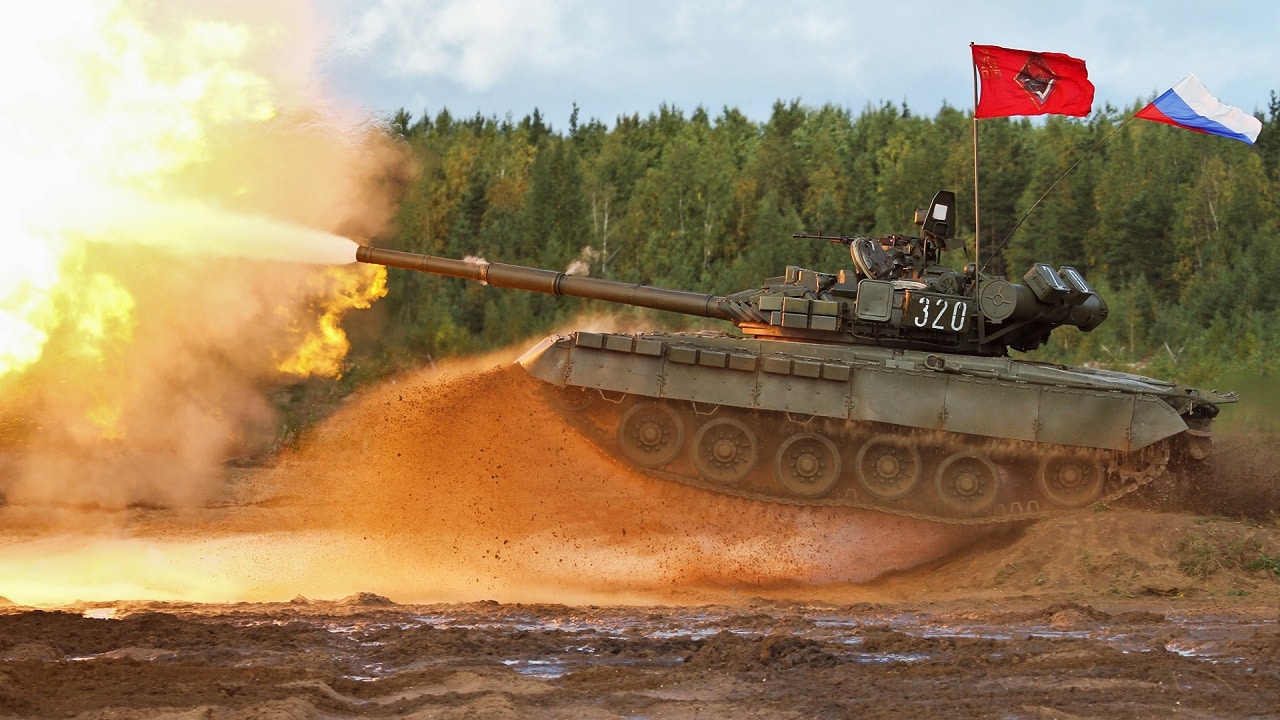Why the Battle for Donbas will be very different: While the world nervously awaits the opening salvo of the Battle of Donbas, many in the West are optimistic. Others believe that the exceptional military performance demonstrated by the Ukraine Armed Forces (UAF) in repelling – and then driving out – Russian forces around Kyiv, will reprise their effort and again blunt Russia’s offensive in the Donbas and eventually outright win the war.
A careful – and honest – assessment of the situation on the ground in Ukraine, however, should dispel such notions.
The longer Kyiv and its Western backers persist in maintaining the belief that Ukraine can win the Battle of Donbas and eventually the war, the more bitter the result if the UAF eventually proves incapable of driving the Russians from the field.
It should be said right upfront, however, that the task for Kyiv isn’t wholly impossible, but it is exceedingly difficult. There is a chance that the Ukrainian troops and civilian defenders could exact such a high price in blood and iron on Russia’s Donbas attack that after some extended amount of time, Russian troops withdraw on their own.
To support that path, however, requires Ukraine to understand two key realities: 1) for that strategy to successfully result in an eventual Russian withdrawal, it would take a year or more of fighting that will leave tens of thousands of additional Ukrainians dead – possibly more – and 2) there is a much greater probability that UAF troops won’t win the Battle of Donbas and will be forced to submit to a negotiated settlement on worse terms than are presently available. Here’s why.
Why Ukraine Won Phase I of the War
When Russia invaded Ukraine on 24 February, they chose to try and overwhelm the country’s leadership mentally by driving four separate axes of advance into Ukraine. Moscow’s likely intent was the hope that Ukrainian President Volodymyr Zelensky would be paralyzed with fear and conclude he had no chance of success, and thus immediately sue for peace. That was a huge gamble on Russian President Vladimir Putin’s part, and one that backfired dramatically.
Not only did Zelensky and his fellow citizens refuse to surrender, they fought with a ferocity and courage that shocked most of the world and all of Russia. Because Putin had divided up his relatively small force into four axes, he ensured that Ukrainian defenders were able to absorb the initial blows, and especially west and north of Kyiv, stopped the Russian advance. Putin’s error filled the Ukrainians with great confidence and enthusiasm.
The primary reasons Russia’s advance into Kyiv failed are that, first, they had too few troops devoted to that axis, their logistics were spread out over hundreds of kilometers from bases in Russia, and the Ukrainian defenders were able to make expert use of the urban terrain. Ukrainians could approach Russia’s armored vehicles undetected from around buildings and often attack at point-blank range.
Ukrainian defenders could fire at Russian armor from the windows of high-rise buildings, where turreted gunners often can’t see. And the defenders could make use of cellars and other parts of buildings that made it nearly impossible for Russian gunners to see or engage them. Moreover, as described in more detail below, virtually all of Russian training over the previous decade had been in conducting maneuver warfare in open terrain – almost none in the confines of major cities.
After suffering egregious equipment and personnel losses in Kyiv’s outskirts, Russia attempted to hold their original forward positions and hope for a breakthrough from the other axes so they could resume a multi-pronged attack into Kyiv. That never happened, as the other three axes also ran into fierce resistance and suffered from lack of massed combat power. After a month of battle, it became clear to Putin that his initial plan had utterly failed.
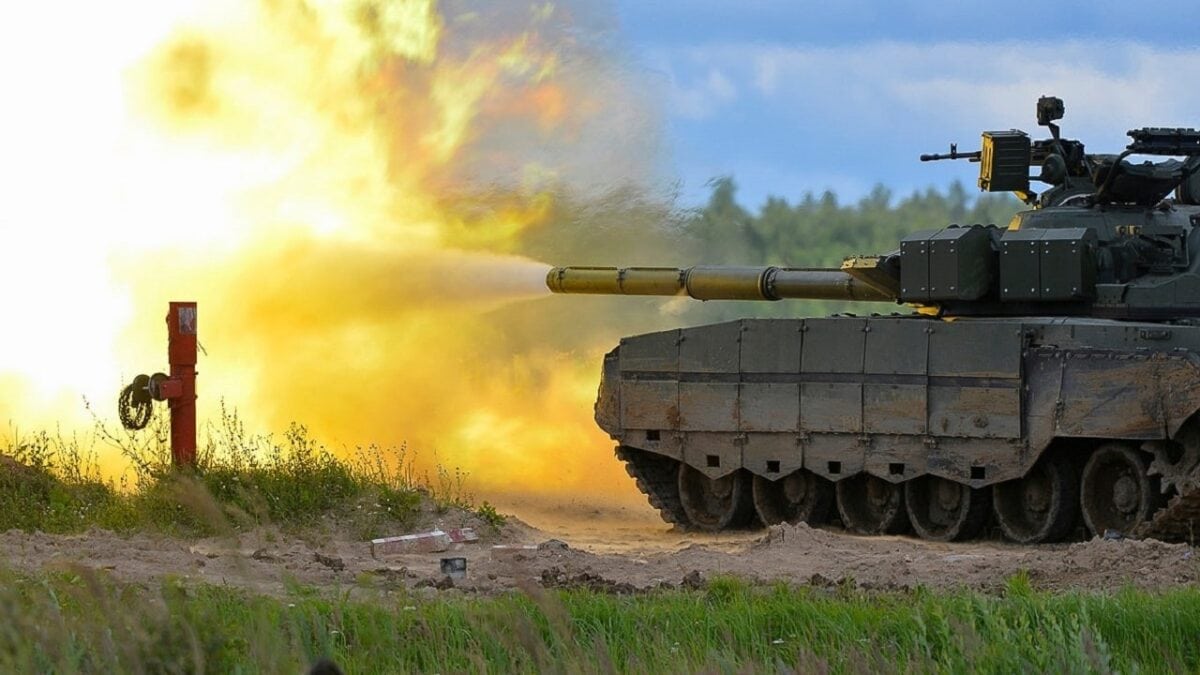
Russian tank firing main gun. Image Credit: Creative Commons.
The Russian president was faced with a major dilemma: keep all his forces holding all the territory they had captured north of Kyiv and try to bring up new units to resume the drive to capture the city, or focus on the Donbas – with the objective of encircling and potentially destroying a pocket of up to 40,000 Ukrainian troops – and completely withdraw up to 70,000 Russian troops north of Kyiv, surrendering all the terrain they had captured.
We now know Putin chose the latter. He no doubt recognized – from his experience in Grozny two decades earlier – that to try and capture a city of nearly three million citizens would take several hundred thousand troops at least, and even then offer no guarantees. But there was something else that likely influenced his decision: a recognition that changing course and elevating capture of the Donbas as the primary objective would reverse many of the conditions that sabotaged his effort in Kyiv, giving Russian troops a major advantage and putting the Ukrainians at a disadvantage.
Why Conditions Favor Russia in Phase II
In the decade prior to the opening of the Russo-Ukraine War, Moscow had spent considerable sums in reorganizing and reforming its military. They went away from a conscript-dominated, infantry-focused army to one based on firepower and maneuver, manned by a cadre of professional soldiers and equipped with more modern technology. Though they could not hope to match the development and technological evolution of the U.S. Armed Forces, Russia could nevertheless make meaningful improvements in its military forces.
With two of my fav Fox personalities, @JenGriffinFNC & @JacquiHeinrich, on showing how #Ukraine can defend against RU assault into #BattleofDonbas – and where the risks are: @defpriorities https://t.co/xPUsd2Eo4L
— Daniel L. Davis (@DanielLDavis1) April 16, 2022
In addition to reorganizing how its tank and mechanized infantry formations arrayed for battle, Russia spent considerable time and effort reforming how it conducted field training for its forces. Each year the Ministry of Defense would conduct at least one major capstone training event that would simulate a large force-on-force engagement spread across hundreds of kilometers of terrain. Key objectives were to improve its ability to fight at the small unit level, improve interservice cooperation, and increase its ability to coordinate actions at the highest command levels.
In an unclassified NATO report, for example, the Vostok 2018 exercise featured, “operations by two opposing sides, with the Central Military District and Northern Fleet forces playing the adversary role against Eastern Military District and Pacific Fleet Forces.” This capacity, the NATO report continued, “would have marked another significant evolution in the complexity and training value of the strategic exercises.”
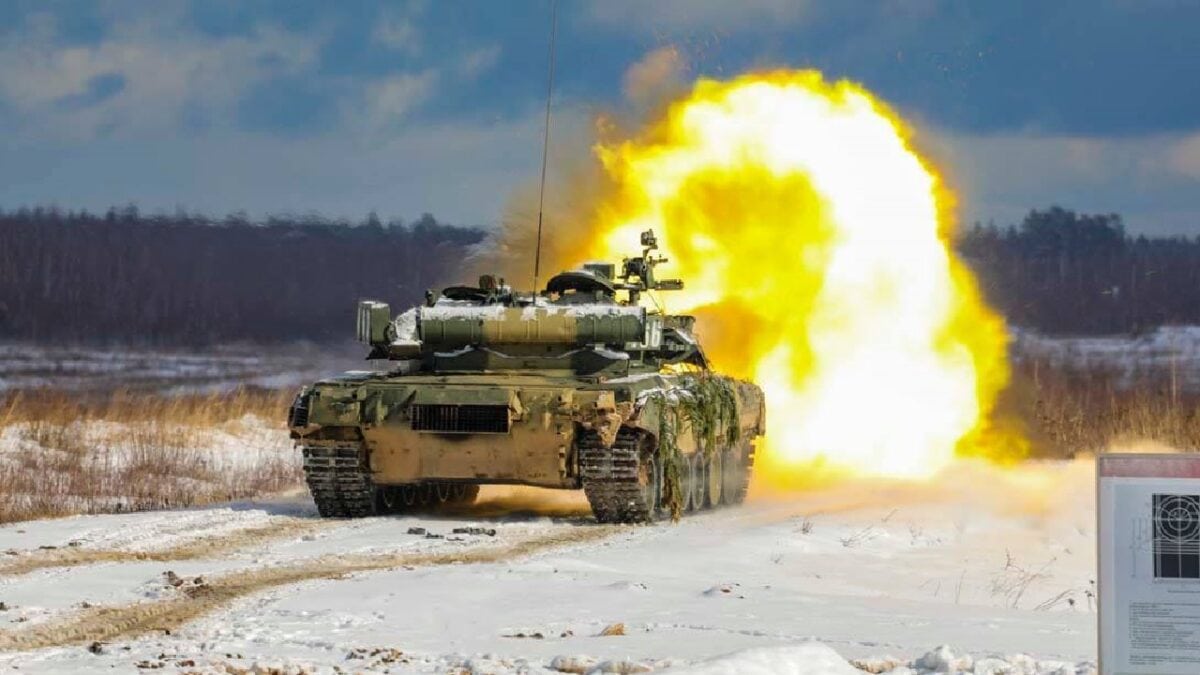
Russian tank firing. Image Credit: Creative Commons.
In the Zapad 2021 exercises – conducted just five months before Moscow’s invasion – Russian expert Michael Kofman wrote in War on the Rocks that Putin’s forces were planning large scale exercises that included, “a maneuver defense, degrading offensive forces and drawing them into fire cauldrons or pockets, before then conducting a counteroffensive.” Russian strategic deterrence forces, he explained, “will simulate strikes against critical targets in theater, as well as on infrastructure in opposing states.”
Among the many strategic and tactical errors which plagued Russia’s phase I operations, all of the tasks mentioned as objectives for Zapad 2021 were among the key things Putin’s troops did well. Heading into the Donbas fight, Russia’s situation will be significantly improved from its disastrous opening.
For the Kyiv axis in February, Russia’s supply lines were dangerously stretched, requiring trips of hundreds of kilometers to keep the frontline troops supplied with sufficient food, fuel, and ammunition. For the Donbas fight, Russia has very short logistics lines, as nearly all the resupply comes directly from Russia and through friendly territory.
In Kyiv, Russia had too few troops to take a major city and the troops they did have were not trained or prepared to conduct intensive urban warfare. In the Donbas fight, Russia has more than doubled the number of troops it originally had for that axis, and these troops have considerable experience in a field training exercises at precisely the type of maneuver warfare that will be needed in the Battle of Donbas.
In the Kyiv fight, Russia was at a constant disadvantage of having enemy forces in and amongst them, firing often from very close range, and frequently from behind, to the flanks, or from above them. In the Donbas fight, the terrain is mostly open meadows which makes it difficult for Ukrainian troops to close with their enemy and plays to the advantage of Russian gunners who can engage at a much greater range with precision fire control systems that UAF troops can’t match with shoulder-fired missiles.
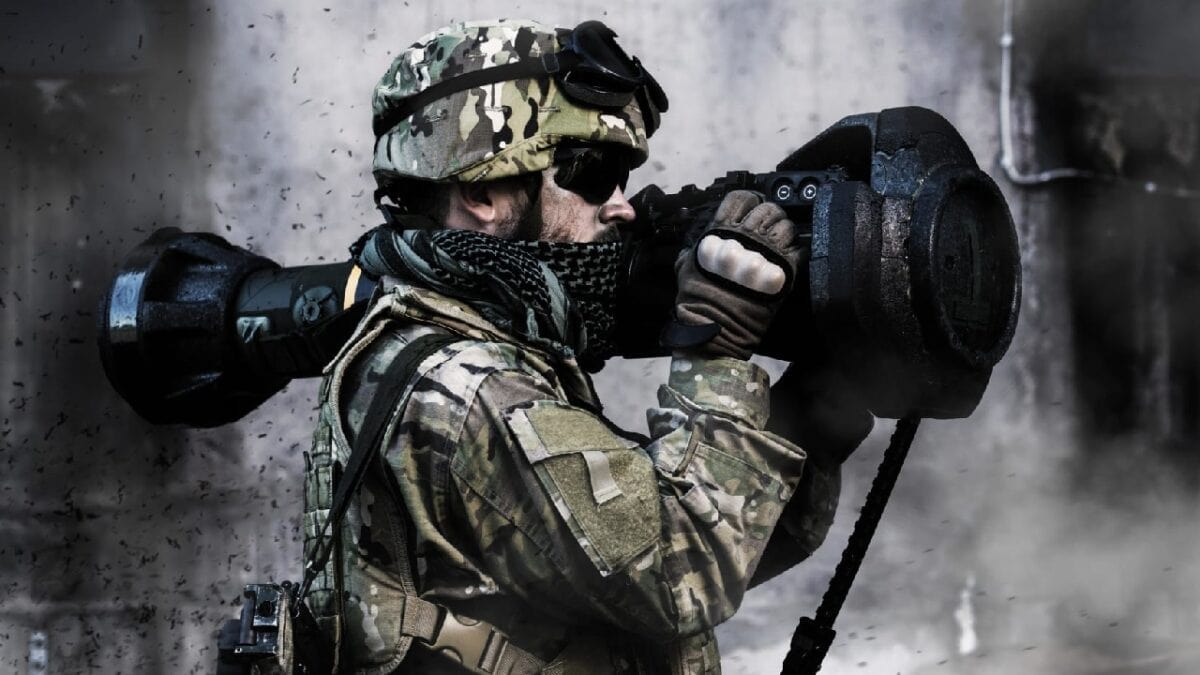
NLAW missile. Image Credit: Creative Commons.
Lastly, Russia has had some time to stockpile more adequate stocks of fuel, ammunition, food and water for its maneuver forces, and have had critical time to conduct pre-combat maintenance before starting the battle. Fundamentally, Russia is in a much better position to succeed in the Donbas fight than they were heading into the Kyiv battle.
Why Conditions Handicap Ukraine in Phase II
On the other side of the ledger, Ukraine will not enjoy the same level of advantages it did in its capital city.
In the Kyiv fight, there was little requirement for UAF troops to conduct coordinated maneuvers. Their primary task was to use small unit detachments that could move discreetly throughout the city, hitting Russian armor in the rear and flanks and then disappearing back into the urban terrain. Their objective was to destroy Russian armor, which they did with remarkable effectiveness.
In the Donbas fight, however, they won’t have high-rise buildings from which to fire down on the tanks, they won’t be able to engage from point-blank range, and it will be much more difficult to catch Russian units unawares.
To have any chance of defeating Russia’s attack on the Donbas, the Ukrainian troops must be able to conduct mobile counterattacks against Russian penetrations, once they occur. That is a much more complex operation than anything required of the UAF in Kyiv and requires substantial familiarity with coordinating actions on the fly, under fire, and with little time to plan.
In the Kyiv fight, Ukrainian troops were able to get regularly resupplied, as Russia was never able to cut off the southern or eastern side of Kyiv, and supplies were readily available. In the Donbas fight, it is ironically the UAF has extended logistic lines. But Zelensky’s troops have additional difficulty in getting supplies to its troops: Russia has been very successful in attacking UAF supply lines throughout the support zone between Kyiv and Donbas.
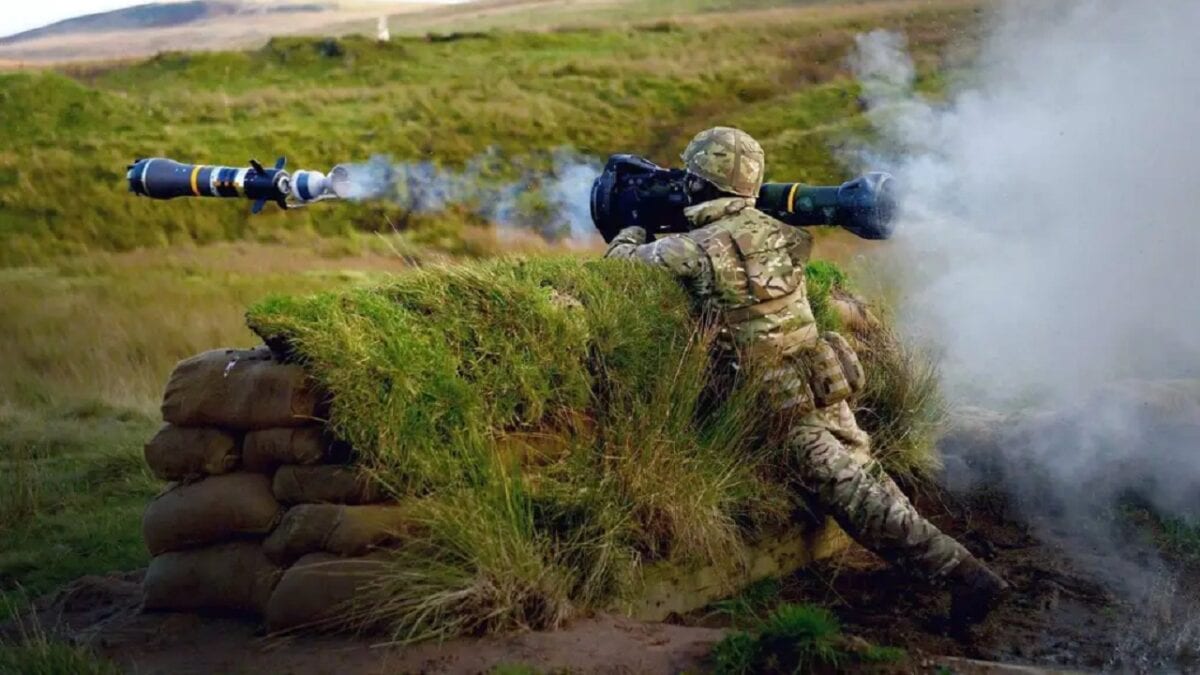
NLAW anti-tank weapon. Image Credit: Creative Commons.
Russia has been increasing its use of airpower, attack helicopters, hunter/killer drones, precision missiles, and increasing use of rocket and heavy artillery fires. It has had a devastating effect on limiting Ukraine’s ability to get ammunition and especially getting fuel to their troops in the Donbas. On the plus side, Zelensky has recognized the criticality of the Battle of Donbas and has sent reinforcements to aid his existing forces. But without an adequate supply of fuel and tank and cannon ammunition, UAF will be severely constrained in their ability to counter Russian penetrations into the Donbas pocket.
Lastly, we must consider the state of Ukraine’s forces heading into the Donbas fight. Though Western media is saturated with reports of Russian failures and their immense equipment and personnel casualties, there has been a virtual embargo on any mention of UAF losses. But we must recognize the damage done to Ukrainian forces has been substantial, and possible equivalent to the Russian losses. The problem is, the UAF doesn’t have the capacity to replace their losses in either personnel or equipment to the extent Russia does.
Moreover, Ukraine troops have had eight years of combat experience in the Donbas, but that has been almost exclusively static, trench warfare-type engagements featuring sporadic artillery duels and sniper fire. They have no experience with the type of massive artillery bombardment that is surely coming. Zelensky’s troops also have limited experience at maneuver warfare, even in training, and will have a hard time conducting effective counterattacks against Russian armored thrusts when they occur.
Ukraine has reportedly mobilized tens of thousands of reservists and they have many foreign fighters who have answered Zelensky’s call to come help in the fight, but it is important to recognize that having large numbers of minimally trained infantry troops is going to be of limited value in an armored battle of the nature we’re likely to see in the Battle of Donbas. Ukraine’s ability to muster sufficient numbers of trained, armored troops will be crucial in giving Kyiv a chance to blunt Russia’s attack.
How Battle of Donbas Might Play Out
Ukrainian troops have thus far performed far above what almost anyone expected of them, demonstrating tenacity and courage that is rarely seen in war. That was enough to stave off Russia’s capture of their capital, but that likely won’t be enough to win a war.
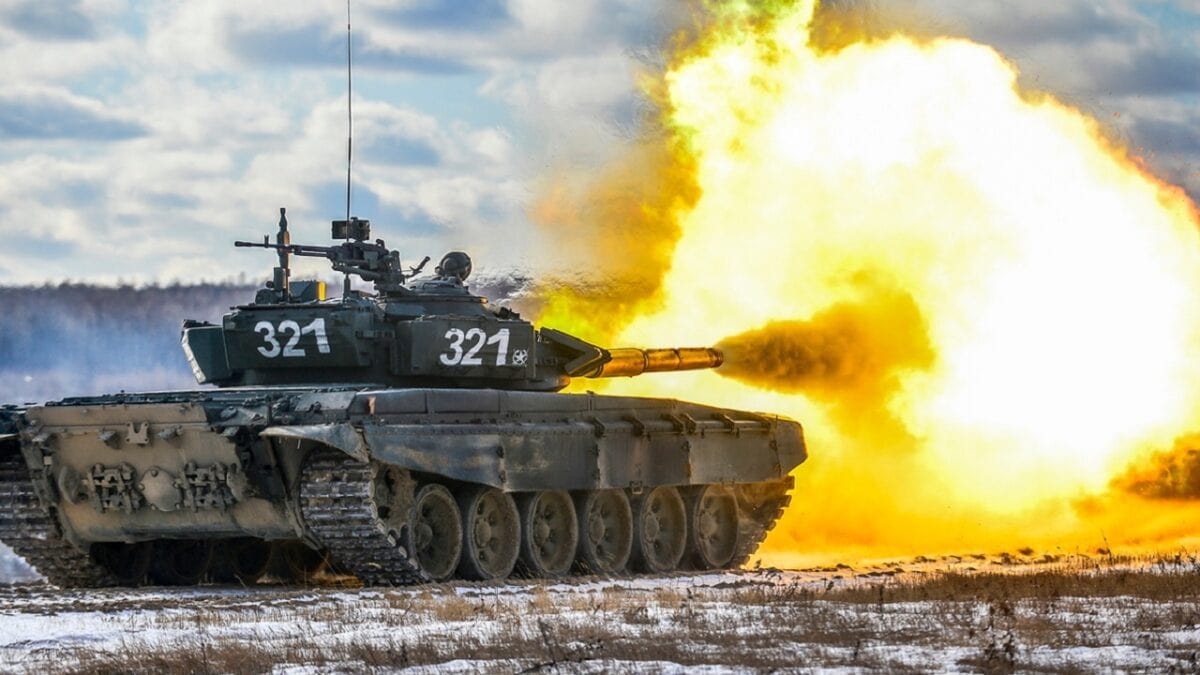
Russian T-90 tank firing its main gun. Image Credit: Russian Ministry of Defense.
Especially for the Donbas phase that is likely to start any day, Ukraine will need trained, experienced troops in mechanized units that know how to fight maneuver warfare over large distances. Conscripts or mobilized reservists have little to no understanding of how to fight such battles and are unlikely to defeat an enemy that has at least conducted years of maneuver field training to scale.
I assess the most likely course of action is that Russia will open with a massive artillery and rocket preparation along with multiple areas of the Ukrainian lines, in order to destroy as much physical equipment as possible and weaken the morale of the defenders. Russia will strike at multiple points so as to disguise the point they intend to seek a breakthrough. Their objective will be to penetrate the UAF defenses at key points, send armored formations racing into Ukrainian rear areas, destroy command and control, logistics hubs, and supply troops.
Overall, Russia will seek to isolate sections of the UAF defense and prevent them from mutually reinforcing each other, methodically destroying each pocket. If Russia can force a big enough gap in the Ukrainian lines, they will likely send infiltration units pouring through the gap in an attempt to flank a large battlegroup from the rear. If Russia can successfully close the pocket around the 40,000 Ukrainian forces defending along the line in the Donbas, they can slowly squeeze the UAF into smaller and more isolated groups, while cutting off all resupply.
That’s how Russia attacked the defenders in Mariupol: first they surrounded them, depriving the defenders of ammunition, food, or water resupply, then methodically closed the circle around the defenders until they either surrendered or were destroyed. Russia will attempt to do the same thing on a larger scale in the Donbas.
Ukraine’s primary hope will be to use its limited armor and fuel to prioritize select units within the pocket so that when Russian armor makes initial penetrations, the UAF will be able to cut off the Russian units and then surround and destroy them.

Russian tank firing. Image Credit: Creative Commons.
Overall, Ukraine doesn’t have sufficient numbers of troops or the right kind of equipment to go on an offensive that would drive Russian attackers back. What they can do, however, is get as many shoulder-fired missiles – and especially attack drones – into the most defendable parts of the Donbas, make themselves into a fortress, and seek to prevent Russia from completing a total encirclement of its Donbas force, inflicting as much of a bloody cost on Russia as possible.
To succeed, Ukraine must survive the initial onslaught and ensure that at least one major resupply route remains open outside of Russian control. If all avenues of logistics are ever completely cut off, it will only be a matter of time before the force runs out of the supplies it needs to live and fight, and the UAF in the Donbas pocket will eventually be eliminated.
If, on the other hand, Ukraine is able to prevent total encirclement, continue to get fresh troops and sufficient supplies coming in, they will have a chance to impose a high enough cost on Putin’s forces over time, that the Russian leader will eventually agree to a negotiated end to the war on terms acceptable to Zelensky.
But we have to be honest and recognize the chances of success for the Ukrainian side is not very high. Not impossible, but more challenging than many recognize. For Ukraine to have any chance of an eventual military victory, they will have to “survive” this battle of Donbas over many months, and then reconstitute their armed forces over another six to nine months to even have a chance at moving to the offensive.
Conclusion
Only the people of Ukraine and their president can decide what the best course of action is for Ukraine. They can choose to try and continue the war and fight for eventual victory, but they will have to acknowledge they are taking a major risk that they could suffer a military defeat instead. Even an eventual victory would come at a profoundly high cost to the Ukrainian population and cities.
A negotiated settlement could end the fighting in the near term but come at the cost of the loss of some eastern territory. There are no easy choices here, and whatever Zelensky and the people of Ukraine decide, they are going to pay a heavy price; there’s just no way around that ugly fact.
Now a 1945 Contributing Editor, Daniel L. Davis is a Senior Fellow for Defense Priorities and a former Lt. Col. in the U.S. Army who deployed into combat zones four times. He is the author of “The Eleventh Hour in 2020 America.” Follow him @DanielLDavis

